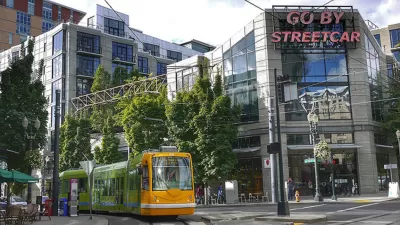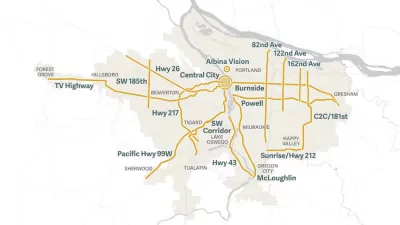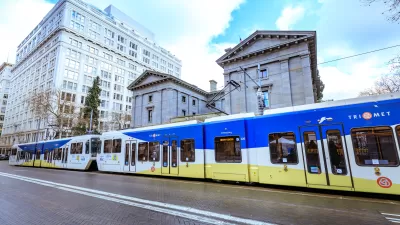As a nation, we are driving less, but we are increasingly stuck in traffic. What explains this paradox? Using Portland as an example, where driving peaked in 2004, Joseph Rose attempts to explain with lots of help from transportation experts.
In short, motorists are "primarily getting behind the wheel only when we have to -- like getting to and from jobs at the same time as everybody else" which means that some roads do indeed experience congestion, writes Rose.
"It's really difficult for some people to their get arms around this," said Micheline Maynard, a former Detroit bureau chief for The New York Times and author of the coming book "Curbing Cars: Rethinking How We Get Around." "I'm stuck in a traffic jam and I can't get where I need to go, yet you're telling me driving is down. Well, there's an explanation."
Short suggests that "Americans appear to be modifying their automotive priorities for environmental, social and economic reasons."
"They're certainly not becoming anti-car," said Jackie Douglas, executive director of the Boston-based alternative-transportation advocacy group LivableStreets Alliance and the person widely credited with coining the term "driving light." "But with the cost of driving, along with tightening budgets and changing attitudes, more households are realizing they don't need to drive everywhere and they don't need a car for every family member who can drive."
In addition, The Car Connection's Richard Read writes that many cited "studies both focused on the number of miles traveled per person and per vehicle. For example, Michael Sivak of the University of Michigan Transportation Research Institute determined that the average American vehicle traveled 11,318 miles in 2011, down from 11,946 in 2004. [However, Sivak also studied vehicle ownership. See a June post on this study].
However, the number of vehicles on the road continues to increase, thanks to business growth, population growth, and other factors. So, yes, we're driving less, but there are more of us driving. That means a net gain of cars on the road, which means an increase in traffic.
Rose provides interesting data on car ownership in the Portland region, where the reduction in car ownership is not uniform. In Washington County, since 2002, the population "surged 16 percent to 547,672 and the number of registered passenger vehicles is up 14 percent to 418,265, suggesting that development patterns, industrial expansion and TriMet cuts in the fast-growing county have left it as car-dependent as ever."
But in Multnomah County, as bicycle commuting, car sharing and transit use has transpired at a revolutionary pace, the number of registered vehicles grew by less than 1 percent, even as the population grew by 11 percent.
"Joseph Rose is The Oregonian's commuting and transportation writer, covering the science and culture of traffic, transit and bicycling in Portland, Oregon."
FULL STORY: Driving drops, but Portland gridlock among the tops: What gives? It's called 'driving light'

Maui's Vacation Rental Debate Turns Ugly
Verbal attacks, misinformation campaigns and fistfights plague a high-stakes debate to convert thousands of vacation rentals into long-term housing.

Planetizen Federal Action Tracker
A weekly monitor of how Trump’s orders and actions are impacting planners and planning in America.

In Urban Planning, AI Prompting Could be the New Design Thinking
Creativity has long been key to great urban design. What if we see AI as our new creative partner?

King County Supportive Housing Program Offers Hope for Unhoused Residents
The county is taking a ‘Housing First’ approach that prioritizes getting people into housing, then offering wraparound supportive services.

Researchers Use AI to Get Clearer Picture of US Housing
Analysts are using artificial intelligence to supercharge their research by allowing them to comb through data faster. Though these AI tools can be error prone, they save time and housing researchers are optimistic about the future.

Making Shared Micromobility More Inclusive
Cities and shared mobility system operators can do more to include people with disabilities in planning and operations, per a new report.
Urban Design for Planners 1: Software Tools
This six-course series explores essential urban design concepts using open source software and equips planners with the tools they need to participate fully in the urban design process.
Planning for Universal Design
Learn the tools for implementing Universal Design in planning regulations.
planning NEXT
Appalachian Highlands Housing Partners
Mpact (founded as Rail~Volution)
City of Camden Redevelopment Agency
City of Astoria
City of Portland
City of Laramie





























